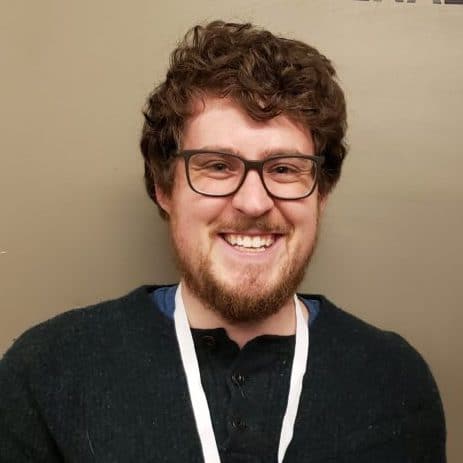Dr. Travis Olds

Hello! My name is Travis Olds. I’m Assistant Curator of Minerals in the Section of Minerals and Earth Sciences at Carnegie Museum of Natural History. I’m from the Upper Peninsula of Michigan, the northern part of the state that is sometimes confused as being a part of Canada, but also considered by many as one of the most beautiful places on Earth. People born in the U.P., as we call it, are known colloquially as “Yoopers,” and like Canadians we are some of the kindest people you will meet. Many Yoopers have an accent that is best described as a mix between Canadian and Minnesotan; we tend to elongate and over-emphasize vowels in spoken words, with favorites being “ya, eh, you betcha, and don’tchya know.” Our favorite dish is the pasty (“pastee”), a baked meat and vegetable-filled pastry that was introduced early in our state’s history by Cornish miners who traveled to the area to make a living and share their knowledge of mining techniques developed overseas.
Hundreds of mines have operated in the U.P. over the last ~200 years, yielding billions of tons of iron and manganese used for the steel produced here in Pittsburgh, and millions of tons of copper used across the world for plumbing, electrical lines, and electronics. Although many mines in the U.P. have long been abandoned, a few iron and copper mines are still in operation today. For several generations my family has made a living working in the mines, including my father and uncle, who were large influencers to my interest in minerals.
As I started collecting and learning more about minerals I became fascinated by radioactive minerals, the ones containing uranium and thorium. Uranium minerals come in many beautiful shapes and colors. They sometimes fluoresce neon green and yellow colors under UV light, and emit invisible high-energy particles during their decay. Although we owe our basic understanding of X-rays and many modern medical technologies and treatments to early studies of radioactive minerals, uranium remains one of the most controversial elements on the periodic table. It has been used to create exceptionally valuable technology but has also created unimaginable evil and pain. In the future, I believe nuclear power will likely become one of the dominant methods for producing “base-load” power to replace the antiquated and highly pollutive coal and natural-gas burning energy plants. I study the atomic arrangement and properties of uranium minerals because they are good analogs for advancing several aspects of nuclear power generation, from mining to processing and storage of used fuel and waste. My mineral collecting trips have taken me to unique places underground in Colorado, Utah, and the Czech Republic, and thanks to the group of friends and researchers that I work with, I have been lucky to find and describe 20 new minerals. At the museum, I research minerals to improve technology and better understand how humans are changing the minerals found on the Earth’s surface.
Photos of our new minerals can be found on my Mindat.org page.
Dr. Carla Rosenfeld

Hello! I’m Carla Rosenfeld, the new Assistant Curator of Earth Sciences in the Section of Minerals and Earth Sciences at Carnegie Museum of Natural History. I received my Ph.D. in Soil Science and Biogeochemistry from Penn State and a B.S in Chemistry from McGill University. Following my Ph.D., I worked as a postdoctoral fellow at the Smithsonian National Museum of Natural History and University of Minnesota. After several years away, I am so excited to be returning to Pennsylvania to continue my research!
As a researcher, I am an interdisciplinary environmental biogeochemist. I use tools from mineralogy, geochemistry, and microbiology to study how pollutants and nutrients behave in the environment. I am fascinated by how biology, geology, and chemistry interact – for example when plant roots scavenge nutrients from soils by dissolving minerals, or when organisms form biominerals (think teeth, shells, and corals). Understanding how living and non-living things interact in different environments helps us to understand and predict how nature will respond to changing climate and other human impacts. Because I’m interested in how microbes make and alter minerals in soils, I’ve visited all sorts of places to collect soils, plants, water, and microbes (mostly bacteria and fungi). I’ve been down to the bottom of the deepest and oldest underground iron mine in Minnesota (Sudan Mine, ~ 1 mile below the ground surface!), to hot springs and the world’s only captive geyser in Idaho, and, right here in Southwest PA, to acid mine drainage remediation systems! Outside of science, I love to spend time outdoors biking (I even biked across the US from CT to CA one summer), mushroom hunting (my favorite mushrooms to find are golden chanterelles, Cantharellus cibarius or Cantharellus lateritius), and generally spending time outdoors. I also love to bake (including science cakes!), and I’ve kept a spreadsheet detailing everything I’ve baked for the last 5 years!
Related Content
Fungi Make Minerals and Clean Polluted Water Along the Way!
What do Minerals and Drinking Water Have to do with Each Other?
